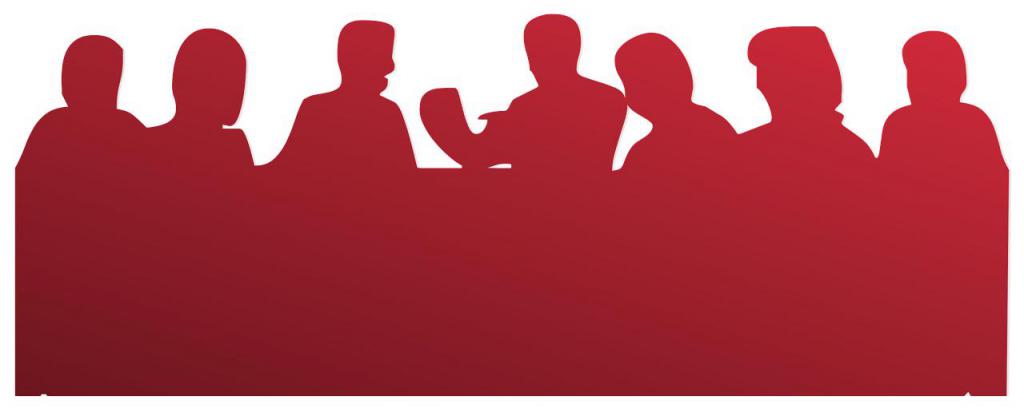The system of rewarding and punishing employees is an indispensable aspect of managing the work of an enterprise of any kind. Stimulation is considered an aspect of the development of the company, largely determines the productivity of the work process, sets the atmosphere in the shops and offices. Personnel specialists talk about general rules, principles of rewarding employees. Using them, you can effectively stimulate staff and make each employed person as interested in their work as possible.
general information
Encouraging employees of the Ministry of Internal Affairs, ATS, employees of commercial companies, small private firms and large industrial complexes is a policy tool used to stimulate the work process. The merits of personnel who distinguished themselves by something are officially recognized, this fact is recorded in the internal documentation, and the person receives a certain bonus. Perhaps moral or material encouragement, some reward - they can issue a prize or give a diploma, assign some honorary title, status, give an official paper confirming work achievements.
As a rule, the immediate supervisor sends a request to higher officials for the reward of the employee who has completed all the standards of the work process or has shown the best results. Promotion has as its main goal to make the company's workflow more efficient. Internal documentation adopted within the enterprise should clearly and in detail describe incentive options and applicable methods. It is important that this is consistent with applicable law. As a basis for drawing up an internal document, you can use the list provided in the Labor Code of our country (Article 191). Forming an exhaustive list of incentive options for a certain enterprise, one should study the various formulations of collective agreements, evaluate the nuances of the work schedule and examine other regulatory documents.

Everything is official
Following the standards adopted within the enterprise, employees are encouraged to issue incentives by orders signed by the chief manager of the company. These orders can only be assigned such incentive options that are noted in the regulations that subordinate the nuances of the company. If some order contains measures that are not included in this list, it is not possible to implement it in practice. Sometimes, official encouragement is formalized not by order, but by order, also signed by the chief executive officer.
The way in which, through what measures, the employees of the Ministry of Internal Affairs, the Ministry of Internal Affairs, state and private organizations, enterprises and institutions will be promoted is an aspect of the employer's responsibility. It is a legal entity that implements a system of incentives, and also applies it in practice, implements a certain method that is considered the most beneficial for the institution. An employee does not have the right to demand incentives or rewards.
If a conflict arises regarding employee incentives, it is not a labor dispute. The employer is not responsible for the implementation of such measures. Incentives are only an additional right.
How it works?
The employee incentive system at the enterprise is being introduced to stimulate staff work. Maximum efficiency can be achieved if we keep in mind the generally accepted rules.In particular, the most effective systematic application of incentive measures in such a way that every employed person understands: he is available to participate in this program. Each employee of the company should have a clear understanding of the results of his work, as well as the conditions under which the incentive will be applied to him. As the practice of personnel management shows, the best results are achieved not by using individual measures, but by a well-coordinated complex.
It is reasonable to apply only those types of employee incentives that are relevant to employees. You should choose measures that have prestige, as well as popular within a particular company. In order for the implemented system to show the desired result, personnel priorities should be considered. These data should be taken into account at the stage of formation of an incentive personnel policy.

Everything has its place
Issuing orders to encourage employees, formulating the features of the internal system and the nuances of its application, special attention should be paid to the most advanced methods and methods. The most reasonable and fair option is to use the following: the better the results, the greater the encouragement for them. It is important to adopt a system of measures that are understandable to employees, and apply them transparently. For any method, the return should be in the short term or in the calculation for the average term, that is, the incentive is paid for 1-4 weeks from the moment a person achieves success.
If you try to apply systemic encouragement to employees of law enforcement bodies, commercial enterprises, government agencies, planning for long periods of time, these measures are unlikely to show the desired result: they simply will not attract people. In order for the incentive system to be effective, one must not only remember the reasonable waiting times and calculations of people, but also the desire of everyone to be awarded with the whole team. Incentives should be open, and incentives should be announced to the team so that everyone knows about the success of a colleague. This gives rise to prestige and status, which are an additional moral reward.
Performance
In order for incentive measures for employees of ATS, a trading or construction enterprise, or a state institution to be as effective as possible, it is reasonable to remember the general principles for creating an incentive system. It must clearly comply with the laws, be vowel and fair, also built according to the rule of reasonable correlation.
And if more?
The legitimacy of employee incentives (police, trading company, store, library and any other institution) is based on the idea of applying legal incentive measures. They become such, if spelled out in the internal documentation, are measured quantitatively, qualitatively, and this is officially recorded. For each measure, it is necessary to immediately stipulate the timing and methods of application.
Publicity means the ability to access information about the reward system for each employed person. Everyone should know about colleagues to whom such measures have been applied. Publicity by some HR specialists is called openness. Both terms are equivalent in this appendix.
Equity is the principle of applying incentive measures to employees of ATS, commercial enterprises, budgetary institutions, implying objectivity in taking into account and analyzing the contribution of each employee. At the same time, they take into account what the final result of the application of efforts by different employees was, and identify how the overall result is dependent on each participant.

Important aspects
The fair encouragement of the police, schools, shops and any other places requires an independent individual assessment of the work of a person. Only in this way can one reveal how great a contribution is from an individual person, what is the return.
Incentive measures should be not only material, but also moral, while being applied in such a ratio that one can talk about the rationality of incentives. Each of the methods of promotion has its own nuances, it is important and significant, it can not be neglected. The greater the incentive applied, the higher the employee's responsibility; there is also feedback in this aspect.
The basis for applying the reward system
The foundation of incentives is the results of a workflow. A person can exemplary cope with the duties assigned to him, be highly disciplined, fulfill all the indicators in accordance with the plan and exceed it. The basis for the application of employee incentives, for example, may be some proposal related to the introduction of innovations or streamlining of the work process. True, it is important to assess how much the implementation of the proposed one really makes the work more efficient and better. It is important to analyze how the proposed approach will affect the organization of the work process, the production aspect, content and other business processes.
An employee, for example, working in a company for a long time, as well as regularly undergoing continuing education procedures, can count on encouragement, which affects the results of his work. It is reasonable to apply incentive programs to those who offer and implement projects that make it possible to make the service and products of the enterprise better and more attractive to the client than competitors' products.

General and special
Of the above reasons for rewarding employees, the first two can be called the most significant, general, while others are considered special and implemented only in some enterprises. Stimulation in accordance with special grounds is possible only if the general ones are observed. So, no matter how good the employee is, no matter what projects he promotes, no matter how long he works in the company, if he does not observe discipline, no incentive measures can be applied to him.
To encourage a person, it is necessary that his merit is noticed by management. The employer may pay attention to them, but there is another option: the team or some employees can write a petition, paying attention to the successes and merits of their colleague. The authorities receive a petition and decide on the application of the incentive, evaluating some special merits.
Varieties
Employees can be rewarded through a variety of measures. Any incentive can be attributed to a group of moral, related to material wealth or human rights. Each of the methods works well in certain conditions. Before applying thoughtful measures in practice, it is reasonable to predict what will give the best result and what will be regarded by the staff as nothing more than a tribute to formality.
The simplest and most applicable form of employee incentive is material. You can give the employee a bonus or give him a gift. Sometimes incentives apply the most unusual and impressive. So, a rather atypical option is to give the most efficient employee according to the results of the reporting period a comfortable and modern chair.
Legal encouragement is associated with discipline. So, if a person shows excellent performance, you can offer him a schedule that is more convenient for him personally - for example, start later than the others or work remotely, take an extra day off.
Employee morale is a variety of honors. You can issue letters, declare, for example, the best employee of the month, put his photo on the board of honor, and so on.
The full list of incentives used is determined by the characteristics of a particular workplace. In ATS, you can issue a registered weapon or assign a new one ahead of time title, while in commercial enterprises material awards are more common.

Officiality: everything is fixed
In order for the incentive to be applied officially, it is necessary to document the rewarding of a person. Internal regulations adopted at the enterprise should describe in detail how and how, in what order incentive measures are applied. Thematic information is recorded in a collective agreement, internal regulations and rules. The documentation indicates what methods of incentive are possible, in what conditions they are applied, what are the priorities in the appointment, as well as the grounds for applying an incentive to an employee. When the decision to apply the incentive is made, a thematic order is formed. The basis for it can be a compiled submission or appeal, a memorandum of service from the immediate superior of the distinguished employee.
All documentation is sent to the chief executive of the company. In the accompanying papers, it is necessary to indicate in detail why the idea arose, why the use of the stimulus is justified. It is necessary to list all the achievements of a person, to assess his activity in the framework of the work process. Such documentation is compiled for each employee individually. The applicant must indicate exactly what kind of incentive it is reasonable to apply in this case, in what form to implement it, what status to assign to a distinguished team member.

Design Nuances
Representation of the promotion belongs to the category of memos.
The sequence of process design is determined by the bureaucratic nuances inherent in the enterprise, as well as the type of incentive chosen. In particular, when it comes to a prize or a gift, you must first obtain permission from the chief accountant, only then send the proposal to the director for consideration. In some companies, it is necessary to get a sight from the personnel department, checking the information about the employee - this eliminates erroneous rewarding.
In fact, the design of the promotion is the area of responsibility of the personnel department employee. The representative of this service is the person on whose shoulders the task of transmitting the note to the head of the enterprise is entrusted. Based on the results of coordination with a person superior in the internal hierarchy, the date of the promotion is selected, the nuances of the procedure are discussed.

Good job is a good reward
If a person works in good faith, you can reward him for this, following the recommendations of the 191st article of the current legislation in the aspect of labor relations. From the sections of this law it is clear: every person who works conscientiously taking into account all the tasks assigned to him, subjectively has the right to receive a certain incentive once. True, you need to remember: the laws indicate the right of the employer, but not an obligation, therefore, in each individual case, everything remains at the discretion of management. Only the employer decides whether to apply the incentive and how to do it. If it was decided to apply a one-time reward, the rewarding actions should be coordinated with the trade union organization - the provisions of the article published under the 132nd number are indicated in the code of labor laws.
Strict adherence to the official order eliminates subjective decisions, and rewarding employees occurs reasonably, in a timely manner, fairly. Perhaps simple rewarding or in combination with special measures. The basis for encouragement due to the faithful fulfillment of the obligations entrusted to a person may be labor success or special merits associated with the work process.
What are the laws talking about?
Current legislation indicates: payment for the employee’s labor consists of two main articles - the main and motivational.The first is a reward for the tasks performed, the second is a bonus. Basic payments must be paid necessarily, strictly on time, if the employee fulfills the labor standards specified in the agreement concluded with him. Additional incentives are aimed at stimulating a person to achieve great success, to exceed standards. The use of incentives can significantly increase the final amount that a person receives - it all depends on how significant the merits are.
It is wise to adjust the work so that the remuneration received by the staff is consistent with the achievements of individuals. Bonuses and allowances can effectively stimulate people, especially if applied regularly. As a rule, bonuses are paid monthly. In a collective agreement, you can specify the payment of remuneration in the event of a holiday, a significant event in the history of the enterprise or the personal life of the employee. Prizes will be justified only if the person really makes an important contribution to the work of the company. Data on various bonuses of various types may be recorded in the work book. For this, a specialized section is included in the document. Regular bonuses paid here are not allowed.

Official aspects
The nuances of the appointment of incentives are described in the constitution in force in our country, as well as in codes, federal legislation and government decrees, and presidential decrees. In addition, the state power in the person of federal authorities also adopts legal acts containing certain legal regulatory incentives for personnel. Of course, the greatest amount of useful information can be extracted from the 191st article of the Labor Code, but other sources should not be neglected.
The internal documentation of the commercial institution, which prescribes the rules of incentives, must be approved by the union representatives and company employees. If the act is drafted and adopted, not taking into account the views of the staff, employees can contact the court to appeal it.
If bonuses are paid regularly, a special provision should be adopted devoted exclusively to incentives, it is in it that the official procedure, documentation accompanying the process, as well as rules for choosing the form and amount of incentives are prescribed.
